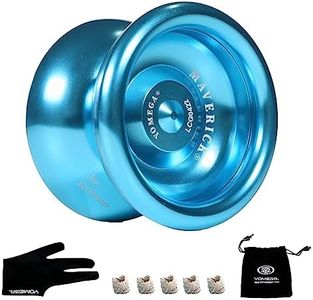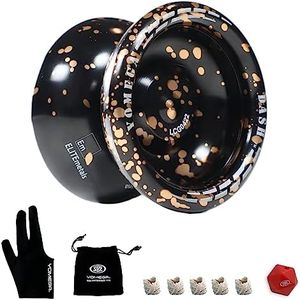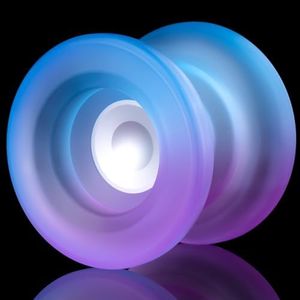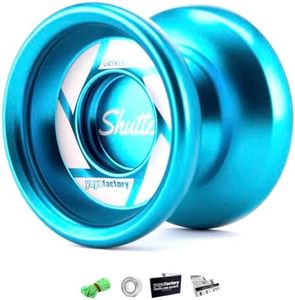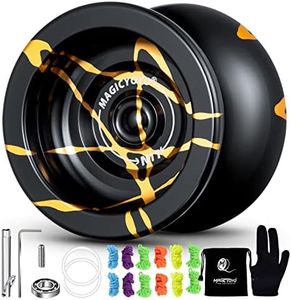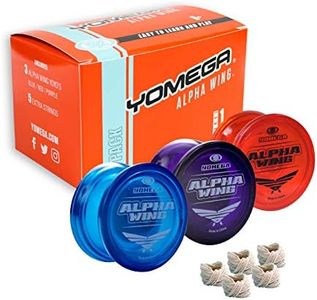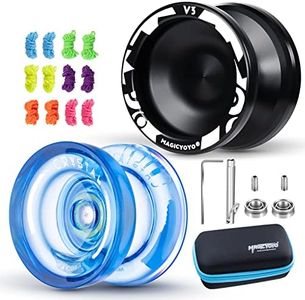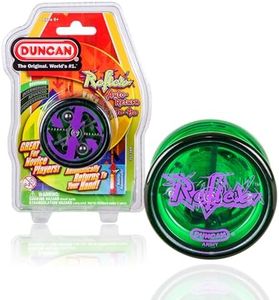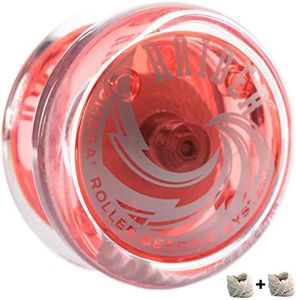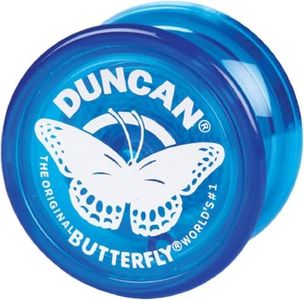We Use CookiesWe use cookies to enhance the security, performance,
functionality and for analytical and promotional activities. By continuing to browse this site you
are agreeing to our privacy policy
10 Best Trick Yoyos
From leading brands and best sellers available on the web.Buying Guide for the Best Trick Yoyos
Choosing a trick yoyo can be a fun journey since it often combines performance, style, and skill level. The right yoyo makes tricks easier, helps you progress faster, and feels better in your hand. When shopping for a trick yoyo, focus on how you want to use it—are you learning basic tricks, practicing advanced string tricks, or want a reliable throw for competitions? Understanding the critical features and what they mean for your play can help you pick a yoyo that grows with your abilities and makes every session enjoyable.Response SystemThe response system is what allows the yoyo to return to your hand when you tug the string. Some yoyos are 'responsive,' meaning a gentle tug brings them back, which is great for beginners or anyone learning basic tricks. More advanced players often choose 'unresponsive' yoyos, which only return with a special bind technique, allowing for longer spin times and complex tricks. If you're starting out, a responsive setup will help with fundamentals, but as you get into advanced tricks, an unresponsive yoyo becomes essential.
Shape/ProfileThe shape or profile of the yoyo affects how it moves and feels during tricks. The three main shapes are butterfly (wide), classic/imperial (rounded), and modified/step-straight (somewhere in between). Wide (butterfly) shapes make landing on the string much easier, which helps with string tricks, making them a favorite for modern performers. Rounded shapes are more traditional and feel comfortable for looping and basic tricks. Your experience level and the types of tricks you want to learn should guide your choice: beginners and string trick enthusiasts usually prefer wide shapes, while those practicing looping might pick a more traditional profile.
MaterialTrick yoyos come in various materials: plastic, metal (often aluminum), and sometimes hybrids. Plastic yoyos are lightweight, budget-friendly, and durable for beginners. Metal yoyos offer more stability, weighing more and spinning longer, which is advantageous for advanced tricks and longer combos. Some yoyos mix both for balance. If you're just starting, plastic is a safe choice, but as you pursue faster spins and more precise tricks, you'll likely appreciate the feel and performance of a good metal yoyo.
Bearing TypeBearings allow the yoyo to spin longer and smoother. Standard flat bearings are found in basic models, while more advanced options use concave or grooved bearings that center the string, helping keep the yoyo stable during complex tricks. Flat bearings are fine for casual play or learning, but if you want to maximize your spin time and make advanced string tricks easier, a high-quality concave bearing is worth considering.
WeightThe weight of a yoyo, usually measured in grams, plays a big role in how it feels and performs. Lighter yoyos are quicker and require more precise control, but may not spin as long, while heavier yoyos provide longer spin times but can feel slower and more demanding on the hand. Beginners may find mid-weight yoyos (around 65-68 grams) easier to handle, while advanced players sometimes prefer specific weights for signature tricks. Consider your strength and play style when choosing—heavier for longer tricks, lighter for speed.
Gap WidthGap width is the space between the two halves of the yoyo. Wider gaps make it easier to land the string for tricky string maneuvers and can help prevent the yoyo from snagging or returning unexpectedly. However, very wide gaps can make it tougher for beginners to control. Narrow gaps are simpler for returns but limit advanced tricks. If you are new, a moderate gap helps with learning both returns and string tricks, while experienced players often choose wider gaps to handle more complex maneuvers.
Axle SystemThe axle connects the halves of the yoyo and can be fixed or adjustable. Fixed axles are simple and require less maintenance, good for casual play. Most trick yoyos use a ball bearing system with a threaded axle, allowing for smoother spins and easier part replacement. An axle that’s compatible with standard bearings gives you flexibility if you want to upgrade or replace parts as your skills grow.
